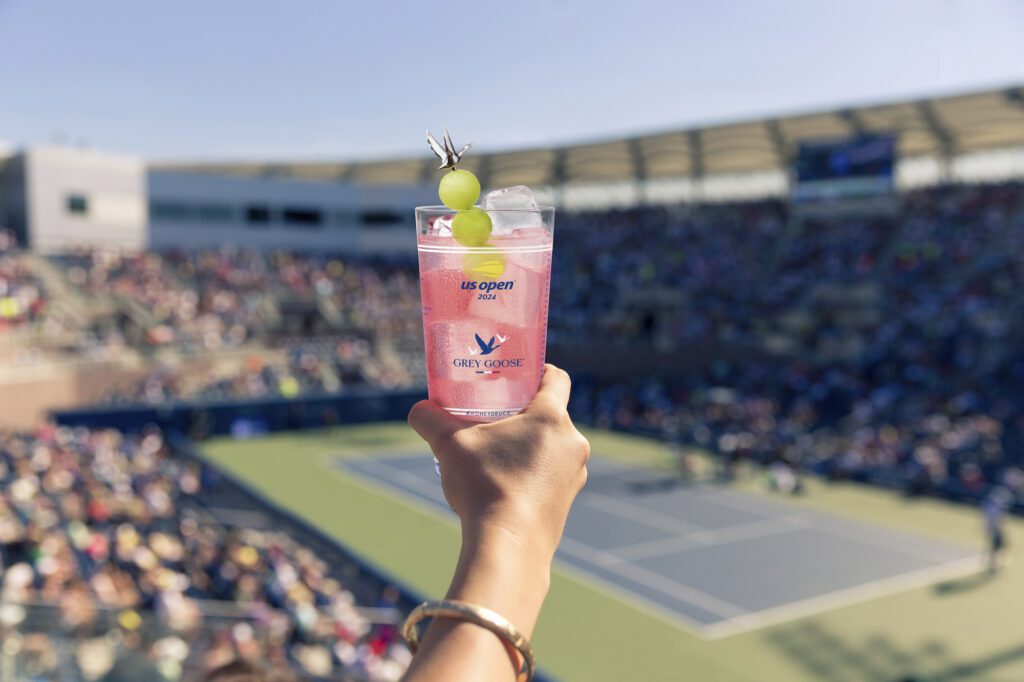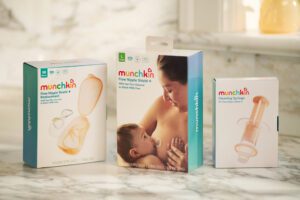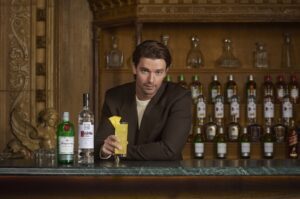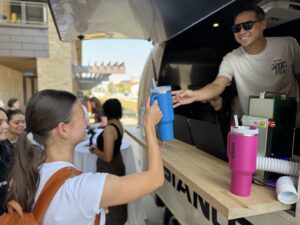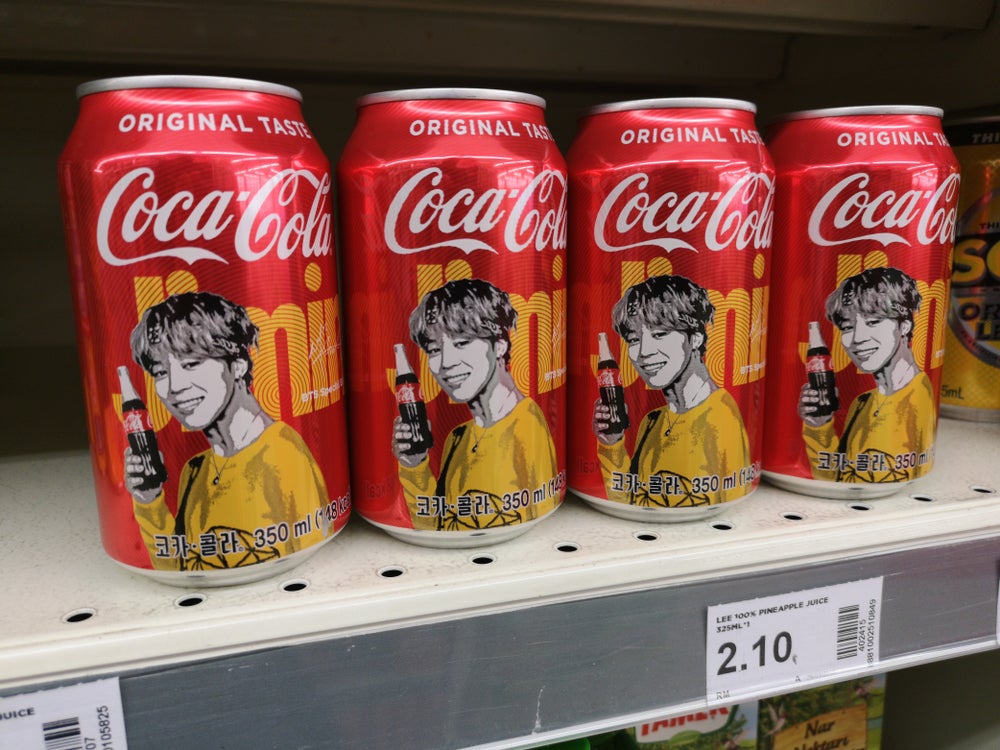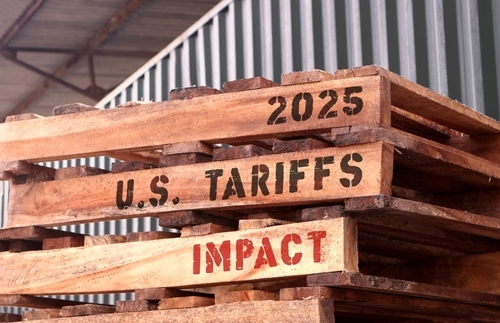In our inaugural Brands on Fire LIVE, which took place earlier this month at Pier Sixty-Six Resort in Fort Lauderdale, Fla., Chief Marketer spoke with Alex Tomlin, SVP of Marketing for Bacardi North America, about the enviable success of Bacardi’s brands in recent years; culturally-relevant marketing initiatives from its top sellers; communicating to and educating younger generations of drinkers; and much more. Below is an excerpt from the conversation. Stay tuned for more Brands and Marketers on Fire LIVE to come.
Kaylee Hultgren, Content Director for Chief Marketer: Consumption within the alcohol industry shifted massively during and after the pandemic. A lot changed, particularly for the brands that you work for. From a marketing perspective, are there things that you continue to do and insights that you learned from that time that you’re still applying today?
Alex Tomlin, SVP of Marketing for Bacardi North America: It’s such a big question, because in the 30 years that I’ve been in marketing, I’d say this pandemic super-cycle has been the most volatile period in the history of consumer goods marketing. The changes have been pretty big and structural in a short amount of time, and they created this massive change in behavior. It impacted the front-end of our business and the backend of our business in so many ways.
But to answer your question, coming out of the pandemic, I’d say there are two areas that I’d address. One is around education, and the other is around experience. Education is a huge behavior change as a result of the pandemic. When hospitality closed down, it caused human beings who work in hospitality to reconsider their life choices. And a lot of people never went back to work in the bars or restaurants. They decided that, hey, this is a really fun industry, but it’s really hard work. And maybe I want to make a different life choice. And as a result of that, it’s a hard time for the on-premise retailers that we supported throughout the pandemic.
We have almost 300,000 licensed premises in the on-premise in the U.S. But now, what we’ve discovered, is that the people working in those on-premise bars, restaurants, hotels, are different. We would take it for granted that these individuals would be able to know about our brands deeply and recommend our brands and persuade people to buy our brands. But we can’t rest on our laurels anymore. So it’s a big focus for us to go back in and reeducate a whole new generation of wonderful hospitality staff in terms of the intrinsics of our brands, the stories around our brands, and how to recommend our brands.
KH: How are you making that happen?
AT: We invest time and money and energy ensuring that the next generation of hospitality are able to connect and tell real stories with a human touch, particularly in a digital age. Close by, in FIU [Florida International University], we run a future proof program where Bacardi invests in the Chaplin School of Hospitality & Tourism Management, basically bringing on the next generation of hospitality leaders, infusing them with our brand stories, our anecdotes, giving them the foundational skills of how to serve drinks and make great drinks, that they take with them throughout their hospitality careers.
The second part is experience. Clearly, one of the massive things from a consumer point of view that happened during the pandemic was that people were stuck at home. And they started to adopt all of these digital tools. Screen time, as you know, went through the roof. The president of Airbnb during the pandemic described the change in digital usage amongst consumers in America. He said that for this generation of consumers, they don’t go to the mall. It’s all about Amazon. They don’t go to the movie theaters anymore, or the cinema. It’s all about Netflix. And they’re not going to the office so much anymore. They’re on teams, they’re on Zoom.
The clear insight that underpins all of our brands based on this knowledge that people are leading increasingly digital lives … is that people will put a premium value on real-life experiences and connections. And that underpins a lot of how we go to market with all of our brands, whether it be with the trade or live experiences and connections in 360 marketing.
KH: Let’s talk about your omnichannel approach. Today you have to reach consumers at multiple touchpoints in order to get your message across, and that has to be consistent. What are some examples of this with your brands?
AT: The omnichannel approach has exploded and is something we really leaned into the last five years. Our sophistication has grown in terms of how we get these seamless and integrated consumer journeys across every touchpoint, which means working closely with all of our agency partners to make sure that we’re hugely joined up in serving up consumers the relevant comms and the relevant platforms, depending on where they are. Data is incredibly important. Audience-first planning is incredibly important. An example of one of our best activations is around the Grey Goose Honey Deuce, which is an activation around a sporting tentpole, the US Open in New York.
Here’s an example of making sure that the whole consumer experience is joined up. We were just talking about the awful traffic here and the awful traffic in New York. If anyone’s made the wrong choice, like I have sometimes, and not taken the subway from Manhattan to Flushing and chosen to get an Uber, what happens is you end up looking at your phone for ages trying to figure out how close the Uber is to the arena. And what you’re seeing is this beautiful ad for the Grey Goose Honey Deuce. Your anticipation is building, so when you go through the gates and you see one of our 18 pop-up bars, you’re definitely ready for a drink.
Another great example: Influencers are more and more important in terms of being a source of truth for consumers. And what we’re finding, particularly in our omnichannel marketing, is that we need to find new and innovative ways [to reach people]. We try and harness user-generated content at the point of purchase, at the moment of truth. We work with a third-party agency to aggregate and find individuals who make recommendations and reviews about our brands and then we turn those individual’s recommendations into real-life stories, bits of content, whether they be video testimonials, photographs or written reviews. We pull this all together and then we syndicate it to our retailer dotcom partners.
What that means is that when you’re buying online, it’s a much richer buying experience because you’ve got social proof, you’ve got individuals who are showing how they’re preparing and drinking these beautiful cocktails online. It increases the engagement and provides a much better shopping experience and reduces shoppers’ hesitation to buy.
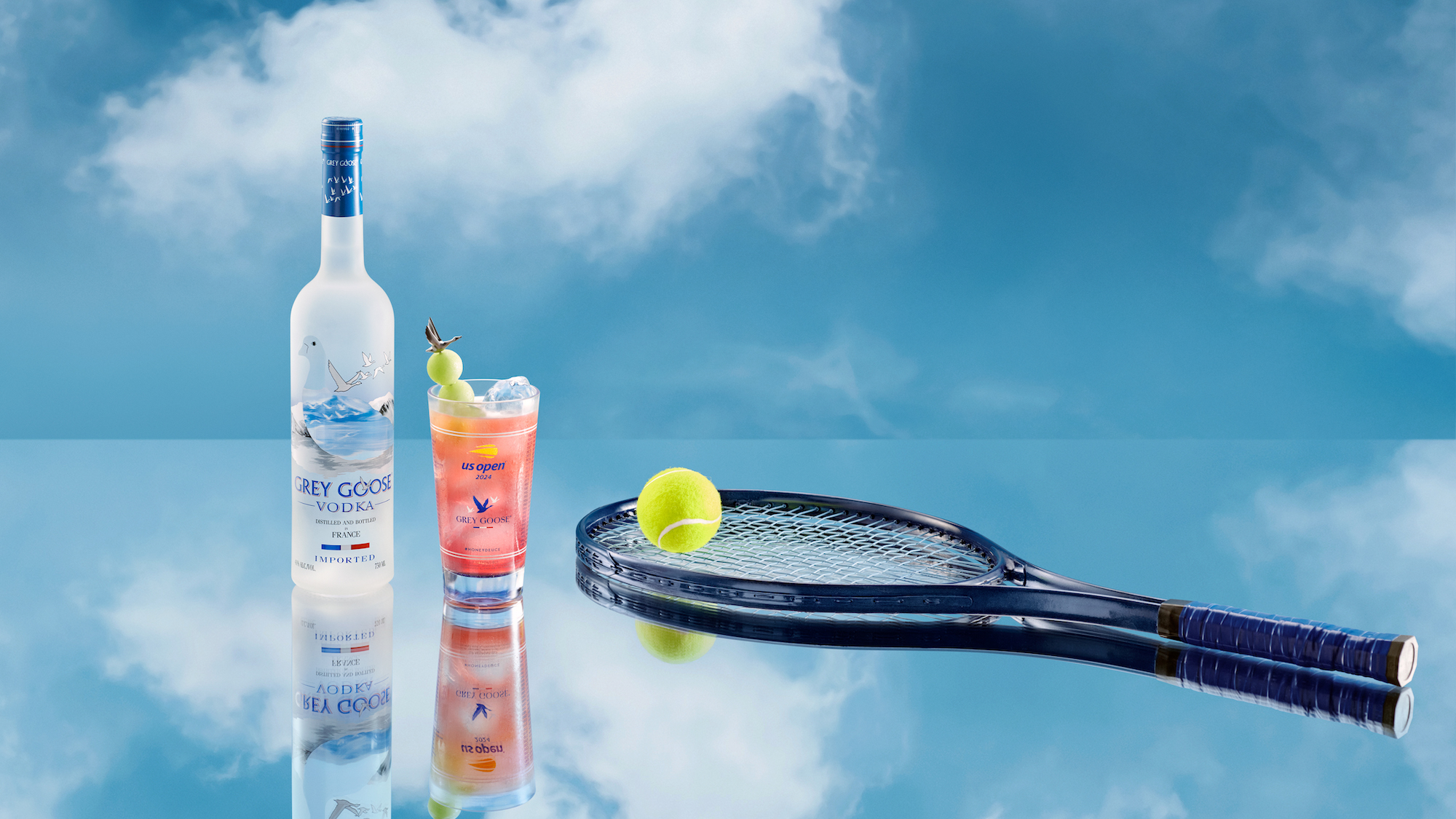
KH: How did you accommodate for the high demand for the Honey Deuce this year while ensuring the experience was still seamless?
AT: One of the biggest issues that we had this year: It is so popular that we really couldn’t keep up with demand. One Honey Deuce gets sold every second, which means that the concessionaires around the Arthur Ashe Stadium have a real problem keeping up with the demand. So we’ve had to innovate to keep up with that. We now have Honey Deuce on draft and we even have frozen Honey Deuce on draft available as well.
One of the things I’m super proud of this year is that this whole story around the Honey Deuce really exploded in popular culture—and it wasn’t by accident. Obviously, we’ve built this foundation and this partnership with the USTA over almost 20 years now. But two years ago, our brand agency team sat down with what we call an IAT, an Integrated Agency Team, where we have all of our wonderful agencies who work on Grey Goose sitting together. And we decided we’d change the brief for the activation around the US Open from, “Grey Goose is the official sponsor of the Honey Deuce” to “You can’t go to the US Open without enjoying a Grey Goose Honey Deuce.”
So, a simple change of language on the brief led to really different implications and implementation in terms of our marketing approach. You’ll have seen through all of our earned media this year and the miles and miles of column inches that were generated in mainstream media around the amount of drinks we sold, the pictures of influencers from Taylor Swift to Leonardo DiCaprio having fun in the VIP boxes to people in general admission stacking up hundreds of [collectors] cups of the Honey Deuce. You’ve seen how that simple change in the brief led to a big difference in terms of how we showed up in culture… And this goes to the heart of what we’re trying to build, which is lifestyle accessories. Going to the US Open is as much about the sport as it is [about] what goes on around the sport. And this is where our brands can play a relevant role in culture.
KH: The popularity of Formula 1 has exploded in the U.S. in recent years, thanks to the Netflix series “Drive to Survive,” among other things. Patrón has been a sponsor for a couple years now. How are you planning to accomplish similar things with F1?
AT: It’s another pandemic phenomenon in the U.S., where people spent a lot of time in front of their screens at home on Netflix watching “Drive to Survive” and got really engaged with the sport. So we caught it just right. Patrón has a partnership with the Oracle Red Bull Formula 1 racing team, which is a highly successful team. Verstappen’s currently the world champion. The year before last they were World Champions and we’ve had a partnership from the foundation with the Mexican driver “Checo”—Sergio Pérez. He retired at the end of last season, but Patrón had a really great partnership with him. He’s from Jalisco, which is where Patrón Tequila is made and originates from.
It’s a collaboration between a sport, which is all about dedication to quality, precision, performance and fantastic lifestyle, with all of these exotic locations and wonderful personalities and the Patrón brand, which is all about passion and mastery itself. We partnered with Checo, who has an enormous Mexican American following in the sport. We show up around all of our events globally, but in the U.S. we added a couple of new locations. We have Miami and Vegas, which are big lifestyle locations. And we also activate at Circuit of the Americas in Austin, which was the location of the original F1 in the U.S. And it’s there that we’re really changing the way we build out this experience this year.
Building on my anecdotes and stories of how we show up with Grey Goose around the US Open, we’re taking the same learnings to how we show up at Circuit of the Americas. So it’s not just about us serving drinks in a concession box. It’s about how we add experience to going to the Formula 1. If you’ve ever been to F1, there’s some downtime between the races and practice. So the way we’re going to show up is with an experiential build-out called The Hacienda, which is basically the brand home in Jalisco, Mexico.
We’ll show up with an interactive, immersive experience, which allows people to get a little bit of shade, listen to some great music and get some refreshment in between the races. And it’s all served in these beautiful replica collector cups, which plays on our experience from the US Open with Grey Goose, which is understanding the Instagrammable value of serving vessels and these unique items that not only give utility to guests at these events—because you’ve got your hands full, you don’t want to spill your drink—but provide the perfect picture with a backdrop, which builds on your social status.
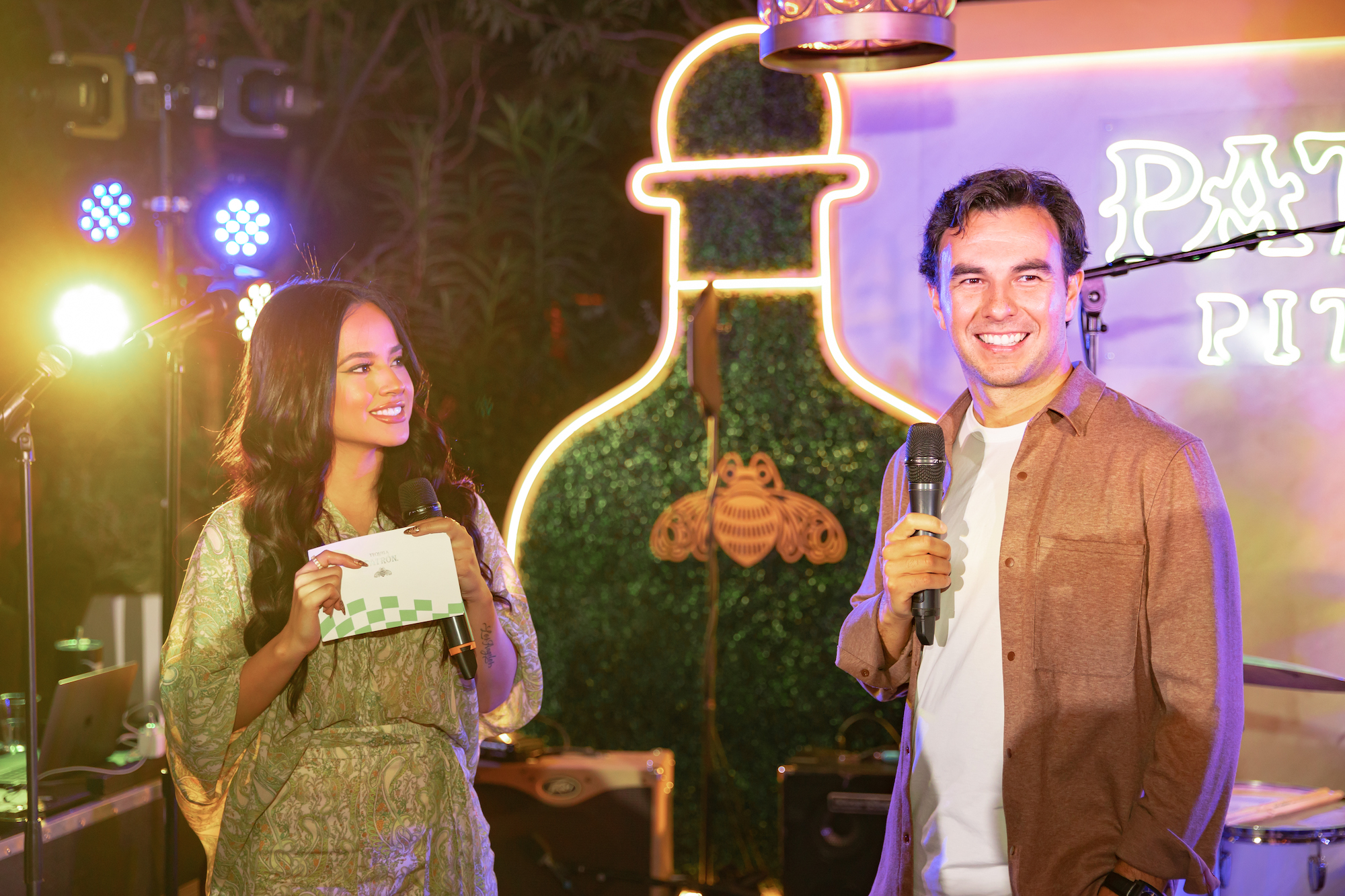
KH: Speaking of Patrón, tell us about the new “additive-free” label you’re using for the product and how that caters to younger drinkers.
AT: We recently released a global Cocktail Trends report. We do it every year, and it essentially helps people keep their finger on the pulse of all of the latest trends and behaviors that we see in cocktails and as it relates to young consumers. Big brands, enduring brands, constantly need to be looking at recruitment. Recruit, recruit, recruit. How do we bring in the new generation of consumers and remain relevant with those consumers and those audiences? It means understanding deeply what they care about and adapting our marketing to show up in a way that adds value to their lives and increases our relevancy.
In the Cocktail Trends report, there’s a stat in there that says that 61% of Gen Z drinkers are interested and want to know about what’s in their food and drink. They care about what they’re putting in their bodies. The amazing thing, in terms of the way that relates to the Patrón Tequila story, is that we’ve always been a brand that has been made the right way—handmade, the hard way, I like to say—which is we’ve been made with only three ingredients, which are Blue Weber agave, water and a bit of yeast to help with the fermentation. And that’s it. Nothing else. No sweeteners, no extracts, no additives, just three simple ingredients. There are 60 pairs of hands that make Patrón Tequila from the field and the cutting of the agave through to the individual labeling of the bottle. It’s hugely labor intensive, and there’s skill, passion and craftsmanship into making sure that every time you taste Patrón it tastes the same way. And it’s a real craft that you have to understand, learn about and master over years and years.
In the last few years, as the tequila category has expanded and exploded, there’s been a tsunami of new entrants, particularly at the top end. But that doesn’t necessarily mean every other manufacturer has the same kind of discipline process and care with quality and detail that Patrón has had through the years. So we’re simply trying to raise awareness with consumers and people in the know, and particularly our hospitality staff and bartenders who pride themselves on knowing what the good stuff is and how to recommend it. They know about stories and they know about how to build drinks. We’re educating them around the story that we’ve always had, that Patrón has been proudly crafting a tequila without additives since its inception in 1989. And this is a hugely relevant message, whether we’re talking to the trade or to that new generation of consumers.
KH: Another way you’re connecting to consumers through culture is through Bacardi Rum and your music platform, “Do What Moves You.” How do you ensure that you show up authentically?
AT: There’s a balance of heritage and storytelling and being relevant in culture. We’ve been around for 162 years, so it’s important that we remain relevant to every successive generation. Consistency is really important in terms of building brands, creating those consistent memory structures that drive relevance and allow people to see and notice your brand and then buy it and convert into consumption. So “Do What Moves You” has been our platform for the last eight years, and that’s all about the Caribbean. It’s all around the joy of rum, movement and music.
We look for that cultural vertical, and we look for collaborations within that space to deliver our brand meaning and proposition in the marketplace. Examples this year would be the collaboration we have with Cuban-born American musician, Camilla Cabello, who featured in our audio advertising. We coincided that with the re-release of her “I Luv It” single drop. She featured with us at our sponsorship of the Video Music Awards. The year before, when we were the first spirit sponsor of the VMAs, it was the 50th anniversary of hip hop. And as probably many of you know, Bacardi has been included and integrated into the lyrics of hip hop songs through the decades. So we did this beautiful custom content that played in the commercial break of the VMAs, which celebrated Bacardi’s lyrical inclusion in hip hop songs through the decades.
The year before in Soho we did a pop-up brand experience called “Sneak Easy.” We partnered with Stadium Goods, which is really the pioneer of sneaker culture, and we [built] a speakeasy. We created this beautiful pop-up experience with a vintage storefront full of really cool merch for sneaker heads—vintage sneakers through the ages. We used AR interactive mirrors, and then at the back you were transported into this magical vibe where we had DJs. It felt tropical, packed full of influencers, great cocktails flowing—a really nice experiential event that allows our brand to connect with the audience who really care, and help us pop nicely in culture.
